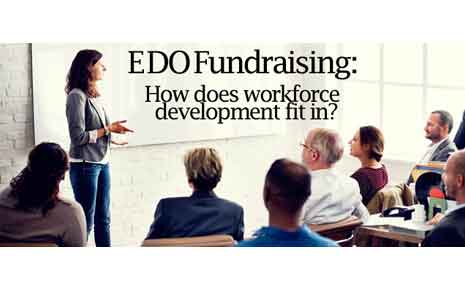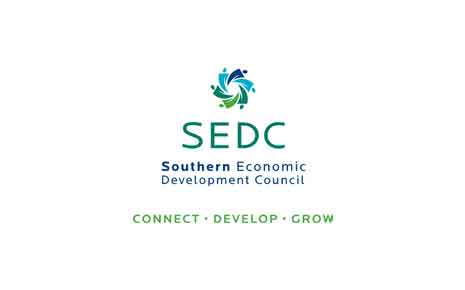This article was originally written for and published in the International Economic Development Council's 'ED Now' newsletter. We are excited to make it available to non-IEDC members here for the first time.
Raising public and private funding for economic development is nothing new. Economic development organizations have financed their work this way for decades. Most raise their funding in three- to five-year cycles, with each subsequent funding campaign raising more than its predecessor, assuming investors derived benefit.
Historically, that benefit has been defined as new jobs, both from new businesses relocating to town and from existing businesses expanding. After all, when new jobs are created, who doesn't benefit? But today, many major employers might not agree.
I've raised funding for economic development organizations for nearly two decades now and have noticed two distinct trends since the global economic downturn in 2008. The first surfaced almost immediately. As economic growth skidded to a halt, most companies planning relocations scrapped their plans unless those relo projects were mission-critical. As a result, it didn't take long for economic developers across the country to shift their focus from business attraction to retention and expansion programs.
The second trend appeared a few years later. Even though unemployment skyrocketed from 2008 through 2011, companies started experiencing difficulty finding skilled workers. That challenge has continued to grow as unemployment dropped to pre-recession levels and 77 million baby boomers continued their retirement plans.
As a result, major employers facing a shortage of workers started questioning our clients' strategies of bringing new jobs to town. Why would any company facing a labor shortage fund new job growth? Most won't, but if an EDO is willing to adjust its strategies to meet the needs of its local employers, the money will follow.
Changing course: Two examples
We first witnessed this in 2011 in Elmira, N.Y. We conducted a feasibility study for Southern Tier Economic Growth (STEG) the EDO serving Chemung County, N.Y. in preparation for its sixth funding cycle. Similar to their past work plans, their proposed strategies focused heavily on new business attraction and job creation.
However, major employers made it clear they wouldn't support the initiative without some changes. At the time, hydraulic fracturing for natural gas just south of the border in Pennsylvania was creating intense competition for labor, and the county's unemployment rate hovered around 7.5 percent. Major employers were experiencing wage inflation and questioned a strategy focused on new job growth.
We conveyed their concerns and feedback to STEG's leadership. Within 60 days of launching our campaign, STEG created a new position focused on existing industry, with a major emphasis on workforce development. The result? STEG's campaign secured $1.7 million in five-year funding, $300,000 more than their $1.4 million goal; the overwhelming majority of that surplus came from major employers.
In 2013, we conducted a feasibility study for the Greater Burlington Partnership (GBP), the EDO serving Des Moines County, Iowa. Their plan proposed raising $1.8 million and creating 1,000 new jobs, but employers pushed back, citing the many job openings they could not fill. (In fact, we identified roughly 350 job openings through our 57 feasibility study interviews. Imagine that 35 percent of the jobs goal our client proposed already existed in the local economy! At an average annual salary of $35,000 per year, those 350 paychecks could have injected $12,250,000 into the local economy.)
Similar to STEG, our client embraced this feedback and adjusted their plans accordingly:
- They lowered their new job goal from 1,000 to 750 to minimize the negative impact to existing employers.
- They created a new task force comprised of the local college president, county school superintendents, and key area plant managers to ensure their local educational structure provides a robust pipeline of new talent.
- GBP is now conducting a laborshed analysis every two years to determine skill sets that are needed not only today, but also five and 10 years from now.
- GBP coordinated plant tours and career fairs for students, parents, teachers, and guidance counselors, to help them understand the career and income opportunities that exist locally.
As a result of addressing the workforce needs of local industry, the Partnership's campaign raised more than $2 million, $200,000 more than what we tested in their feasibility study.
A workforce-focused campaign
After seeing workforce initiatives play more significant roles in our economic development campaigns over the last few years, we started a campaign in January focused exclusively on workforce.
When we conducted our feasibility study for the Greenwood Promise, an initiative driven by the Greenwood (S.C.) Partnership Alliance, there were 1,321 job openings in this community of 70,000. At an average salary of $35,000 per year, these job openings totaled $46,235,000 in unrealized payroll. The Greenwood Promise aims to change that.
Modeled after the original Kalamazoo Promise, the Greenwood Promise guarantees that any child who graduates high school in Greenwood County can attend college for free. The Greenwood Promise, an endowment that we are helping capitalize via a $5 million campaign, will cover all in-state tuition and fees.
Local graduates will first attend Piedmont Technical College to earn a two-year degree. Should they decide to continue their education, they can attend any in-state school to earn a four-year degree, with tuition and fees covered at both institutions. The long-term benefits of this initiative are many:
- Over the next five years, Greenwood leaders expect to fill the majority of the jobs currently open.
- Roughly 25 percent of those who enroll in a four-year institution leave without a degree, returning home with thousands of dollars of debt and little hope for a good job. Byearning their two-year degree first, those students can earn $30,000 to $40,000 or more per year, should they eventually choose not to pursue a four-year education.
- Greenwood is a rural community, and major employers have struggled to recruit professionals to town. The Greenwood Promise provides a critical recruitment incentive to these employers.
- Site selection consultants confirm that an available, affordable, and skilled workforce plays a significant role in their client's location decisions. Local business and community leaders believe the Greenwood Promise will provide an advantage when competing for future relocation prospects.
What do your employers want?
Before going forward with your next economic development fundraising campaign, consider visiting your major employers to see if your proposed goals address their needs but don't be surprised if they don't. Historically, many economic developers have seen their mission as new job creation, with others responsible for making sure the local workforce meets employers' needs.
While this structure may have worked in the past, it clearly needs adjusting. By no means am I suggesting EDOs should start training workers how to weld, but economic developers should be at the center of local workforce discussions, serving as the facilitator between major industry and their community's educational institutions, both primary and secondary.
With 77 million baby boomers in the process of retiring, we'll soon see a labor shortage in this country like never before. Those forward-thinking communities' and their forward-thinking economic developers that understand the importance of workforce recruitment, retention, and development will enjoy a competitive advantage that will pay dividends for years to come.
Click to download: Fundraising for Workforce Development by Convergent.







